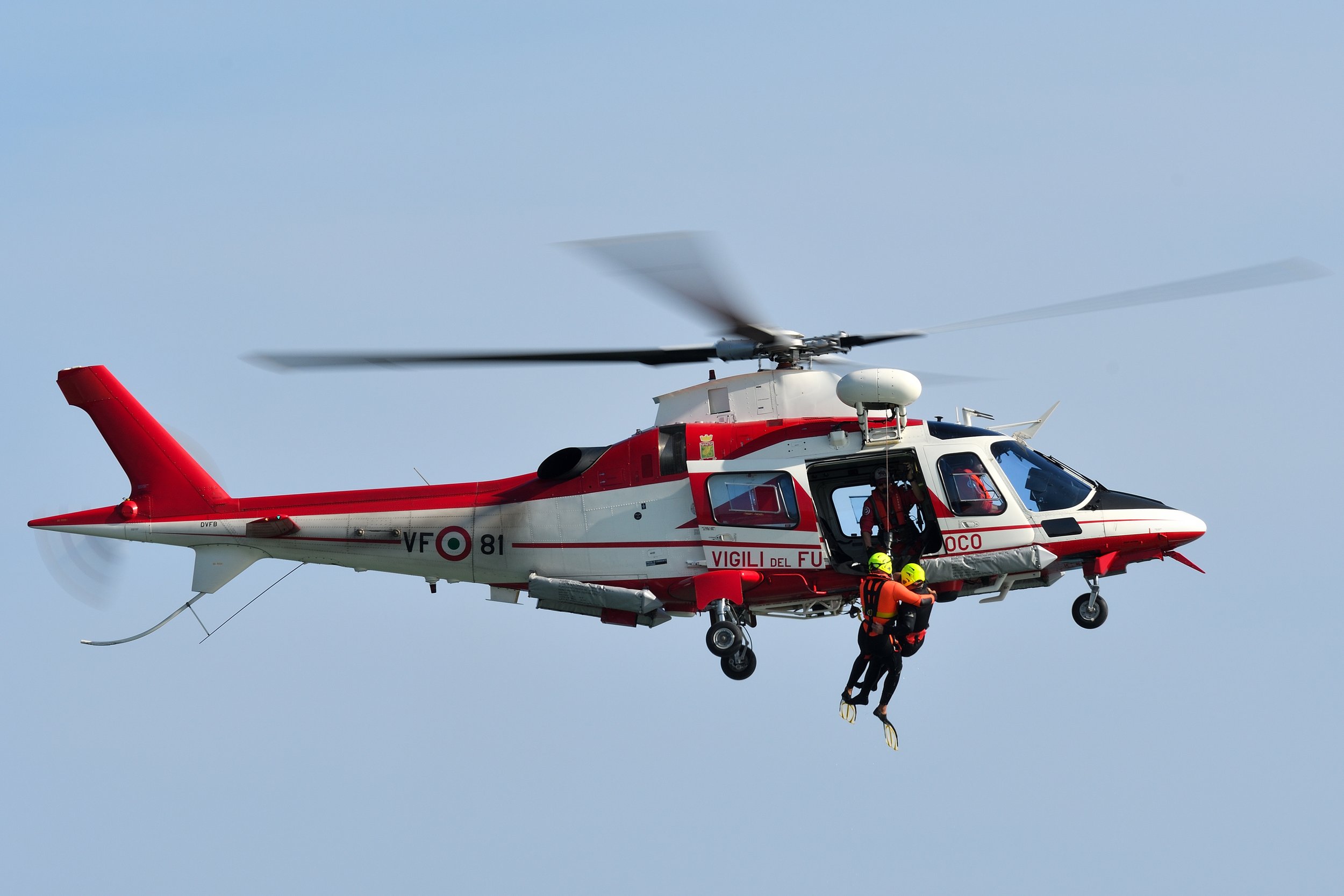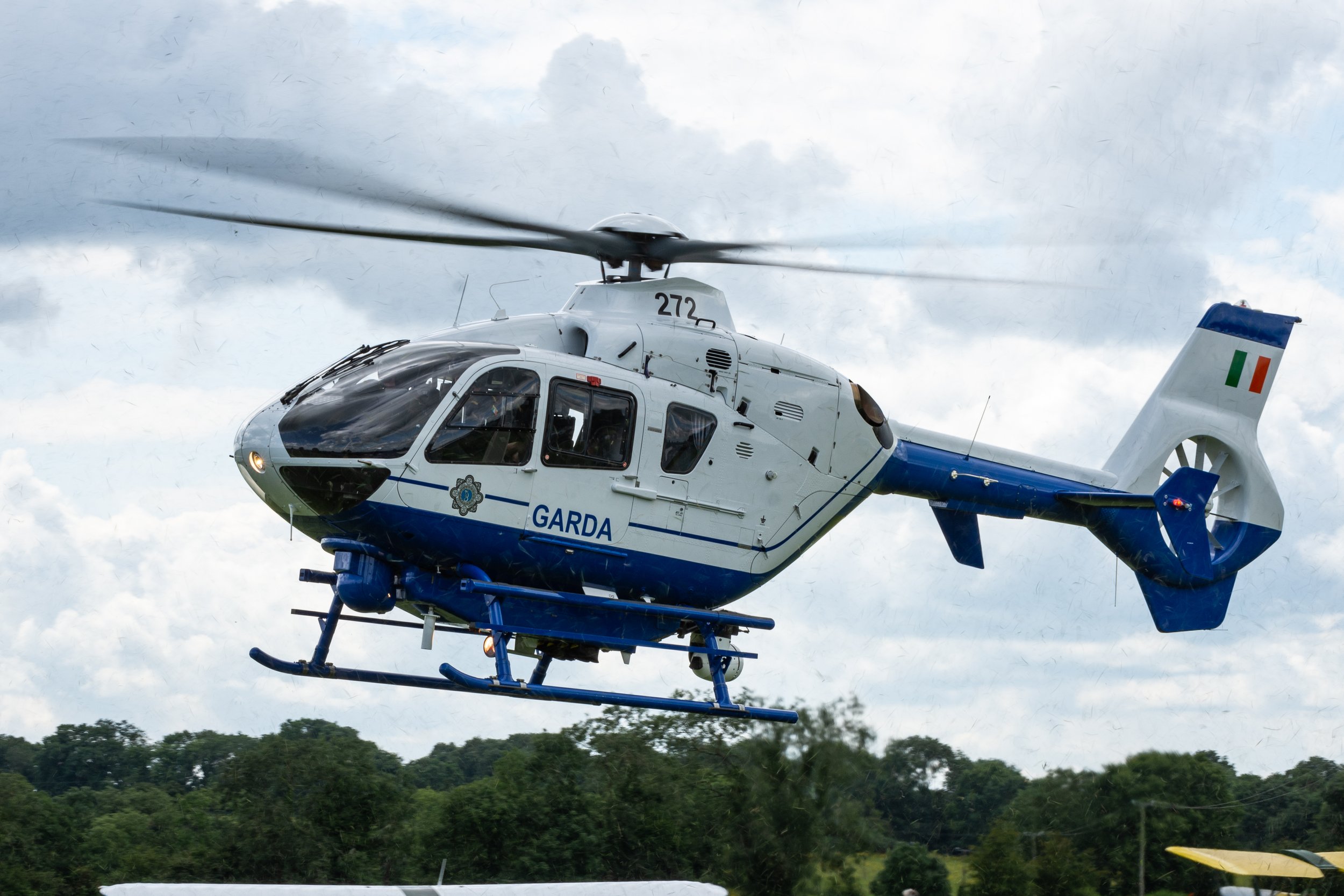Vietnam Pair
Country
UK
Aircraft
Huey and Loach
Base
Private helipad Wesham
Bell UH-1H Iroquois
The Bell UH-1 Iroquois (nicknamed "Huey") is a utility military helicopter powered by a single turboshaft engine, with two-bladed main and tail rotors. The first member of the prolific Huey family, it was developed by Bell Helicopter to meet a 1952 US Army requirement for a medical evacuation and utility helicopter, and first flew in 1956. The UH-1 was the first turbine-powered helicopter produced for the United States military, and more than 16,000 have been built since 1960.
The Iroquois was originally designated HU-1, hence the Huey nickname, which has remained in common use, despite the official redesignation to UH-1 in 1962. The UH-1 first saw service in combat operations during the Vietnam War, with around 7,000 helicopters deployed. The Bell 204 and 205 are Iroquois versions developed for the civil market.
The UH-1 has a metal fuselage of semi-monocoque construction with tubular landing skids and two rotor blades on the main rotor. Early UH-1 models featured a single Lycoming T53 turboshaft engine in versions with power ratings from 700 shp to 1,400 shp. Later UH-1 and related models featured twin engines and four-blade rotors.
All aircraft in the UH-1 family have similar construction. The UH-1H is the most-produced version and is representative of all types. The main structure consists of two longitudinal main beams that run under the passenger cabin to the nose and back to the tail boom attachment point. The main beams are separated by transverse bulkheads and provide the supporting structure for the cabin, landing gear, under-floor fuel tanks, transmission, engine and tail boom. The main beams are joined at the lift beam, a short aluminium girder structure that is attached to the transmission via a lift link on the top and the cargo hook on the bottom and is located at the aircraft's centre of gravity. The lift beams were changed to steel later in the UH-1H's life, due to cracking on high-time airframes. The semi-monocoque tail boom attaches to the fuselage with four bolts.
The UH-1H's dynamic components include the engine, transmission, rotor mast, main rotor blades, tail rotor driveshaft, and 42-degree and 90-degree gearboxes. The transmission is of a planetary type and reduces the engine's output to 324 rpm at the main rotor. The two-bladed, semi-rigid rotor design, with pre-coned and underslung blades, is a development of early Bell model designs, such as the Bell 47 with which it shares common design features, including a damped stabilizer bar. The two-bladed system reduces the storage space required for the aircraft but at a cost of higher vibration levels. The two-bladed design is also responsible for the characteristic 'Huey thump' when the aircraft is in flight, which is particularly evident during descent and in turning flight. The tail rotor is driven from the main transmission, via the two-directional gearboxes which provide a tail rotor speed approximately six times that of the main rotor to increase tail rotor effectiveness.
The UH-1H also features a synchronized elevator on the tail boom, which is linked to the cyclic control and allows a wider centre of gravity range. The standard fuel system consists of five interconnected fuel tanks, three of which are mounted behind the transmission and two of which are under the cabin floor. The landing gear consists of two arched cross tubes joining the skid tubes. The skids have replaceable sacrificial skid shoes to prevent wear of the skid tubes themselves. Skis and inflatable floats may be fitted.
Internal seating is made up of two pilot seats and additional seating for up to 13 passengers or crew in the cabin. The maximum seating arrangement consists of a four-man bench seat facing rearwards behind the pilot seats, facing a five-man bench seat in front of the transmission structure, with two, two-man bench seats facing outwards from the transmission structure on either side of the aircraft. All passenger seats are constructed of aluminium tube frames with canvas material seats and are quickly removable and reconfigurable. The cabin may also be configured with up to six stretchers, an internal rescue hoist, auxiliary fuel tanks, spotlights, or many other mission kits. Access to the cabin is via two aft-sliding doors and two small, forward-hinged panels. The doors and hinged panels may be removed for flight or the doors may be pinned open. Pilot access is via individual hinged doors.
While the five main fuel tanks are self-sealing, the UH-1H was not equipped with factory armour, although armoured pilot seats were available.
The UH-1H's dual controls are conventional for a helicopter and consist of a single hydraulic system boosting the cyclic stick, collective lever and anti-torque pedals. The collective levers have integral throttles, although these are not used to control rotor rpm, which is automatically governed, but are used for starting and shutting down the engine. The cyclic and collective control the main rotor pitch through push-pull tube linkages to the swashplate, while the anti-torque pedals change the pitch of the tail rotor via a tensioned cable arrangement. Some UH-1Hs have been modified to replace the tail rotor control cables with push-pull tubes similar to the UH-1N Twin Huey.
| Back to Top |
Hughes OH-6 Cayuse
The Hughes OH-6 Cayuse (nicknamed "Loach", after the requirement acronym LOH—Light Observation Helicopter) is a single-engine light helicopter with a four-bladed main rotor used for personnel transport, escort and attack missions, and observation. Hughes Helicopters also developed the Model 369 as a civilian helicopter, and the Hughes Model 500, currently produced by MD Helicopters as the MD 500.
In 1960, the United States Army issued Technical Specification 153 for a Light Observation Helicopter (LOH) capable of fulfilling various roles: personnel transport, escort and attack missions, casualty evacuation and observation. Twelve companies took part in the competition and Hughes Tool Company's Aircraft Division submitted the Model 369. Two designs, those submitted by Fairchild-Hiller and Bell, were selected as finalists by the Army-Navy design competition board, but the U.S. Army later included the helicopter from Hughes as well.
The first Model 369 prototype flew on 27 February 1963. Originally designated as the YHO-6A according to the Army's designation system, the aircraft was redesignated as the YOH-6A in 1962 when the Department of Defense created a Joint designation system for all aircraft. Five prototypes were built, fitted with a 252 shp Allison T63-A-5A, and delivered to the U.S. Army at Fort Rucker, Alabama to compete against the other ten prototype aircraft submitted by Bell and Fairchild-Hiller. During the course of the competition, the Bell submission, the YOH-4, was eliminated as being underpowered (it used the 250 shp T63-A-5). The bidding for the LOH contract came down to Fairchild-Hiller and Hughes. Hughes won the competition, and the Army awarded a contract for production in May 1965, with an initial order for 714 that was later increased to 1,300 with an option on another 114.
In 1968 Hughes submitted a bid to build a further 2,700 airframes. Stanley Hiller complained to the U.S. Army that Hughes had used unethical procedures; therefore, the Army opened the contract for rebidding by all parties. Hiller did not participate in the rebidding, but Bell did, with their redesigned Model 206. After a competitive fly-off, the Army asked for sealed bids. Hughes bid $56,550 per airframe, while Bell bid $54,200. Reportedly, Hughes had consulted at the last moment with his confidant Jack Real, who recommended a bid of $53,550. Hughes, without telling him, added $3,000 to the bid and thus lost the contract.
| Back to Top |











| Back to Top |

































